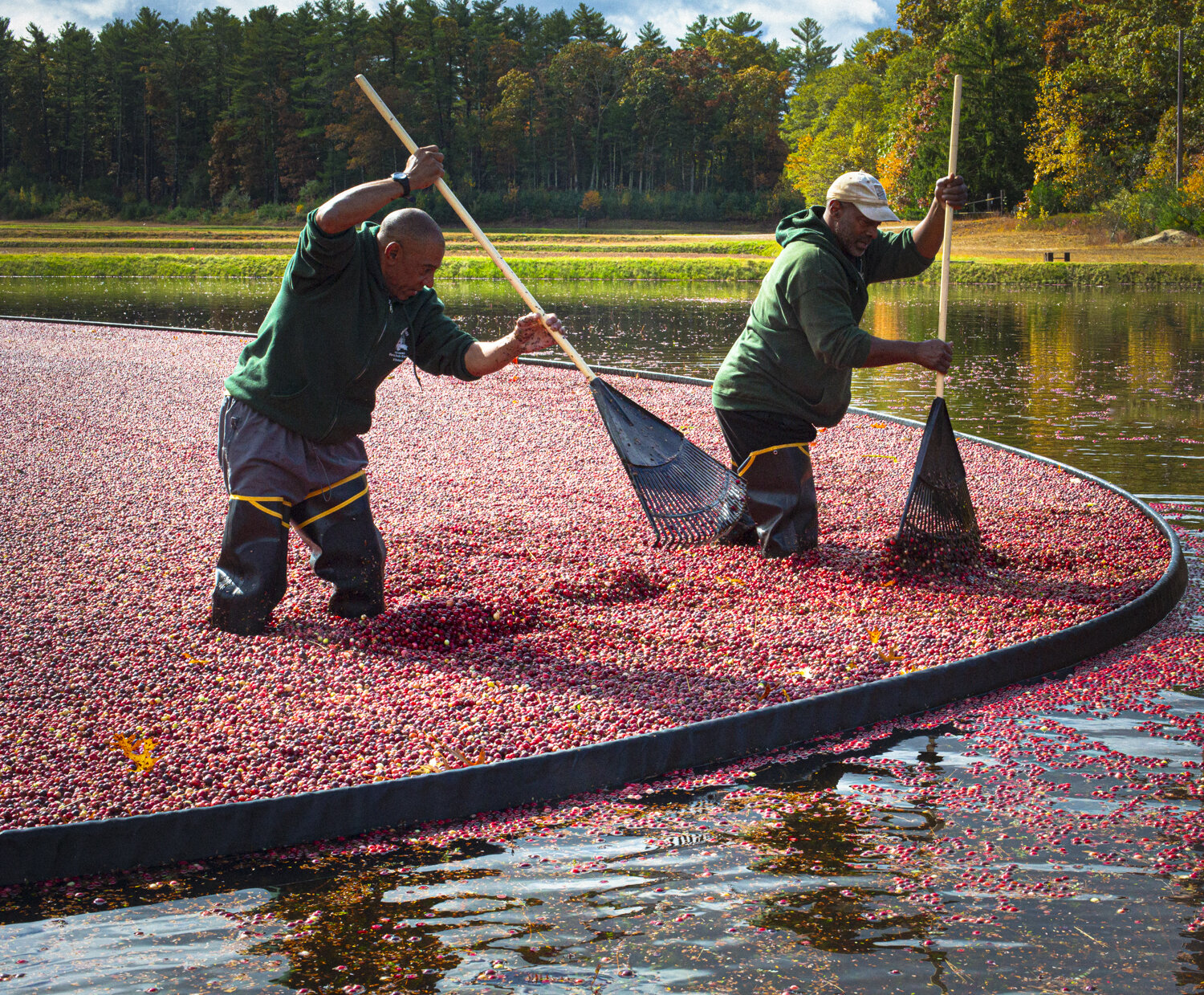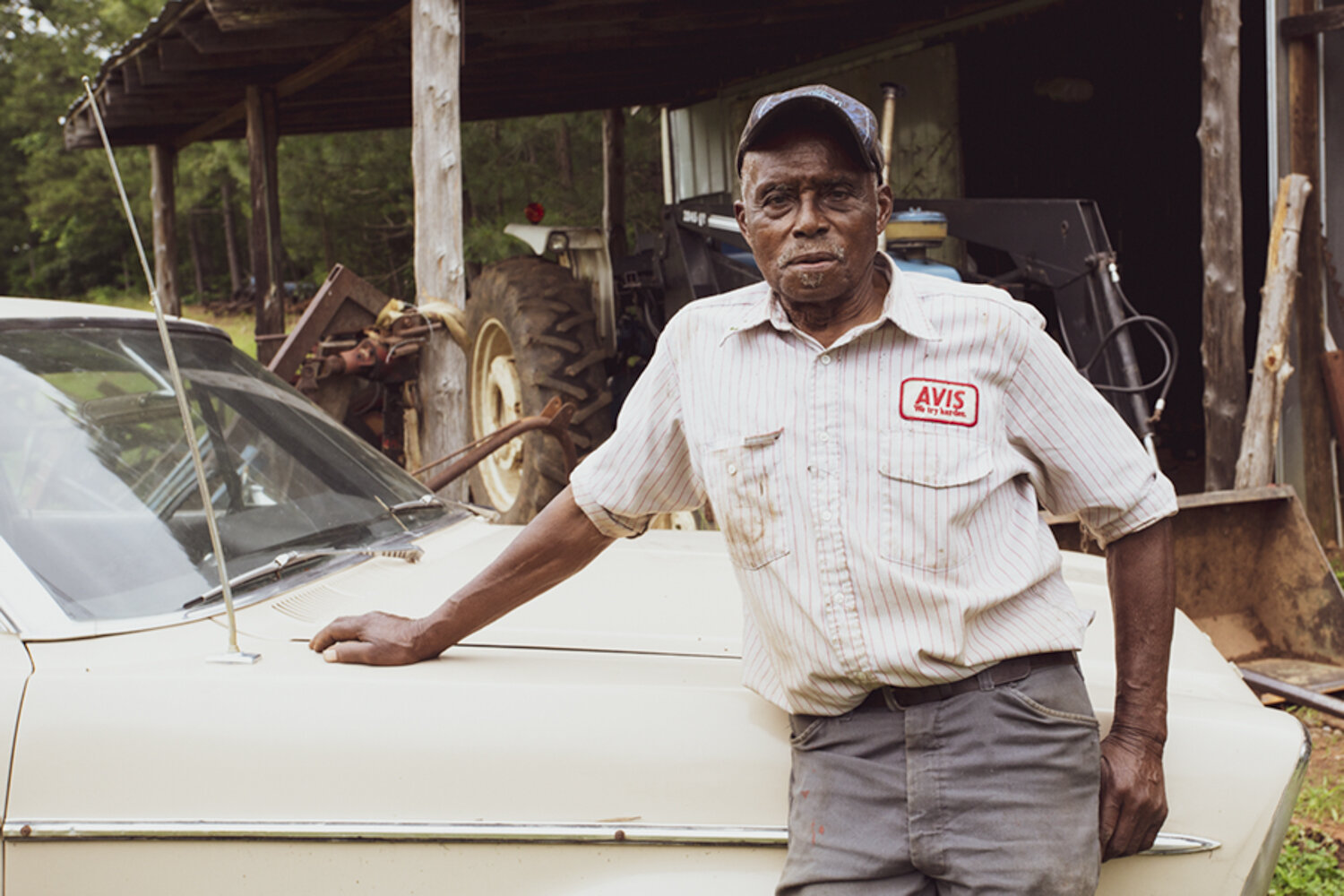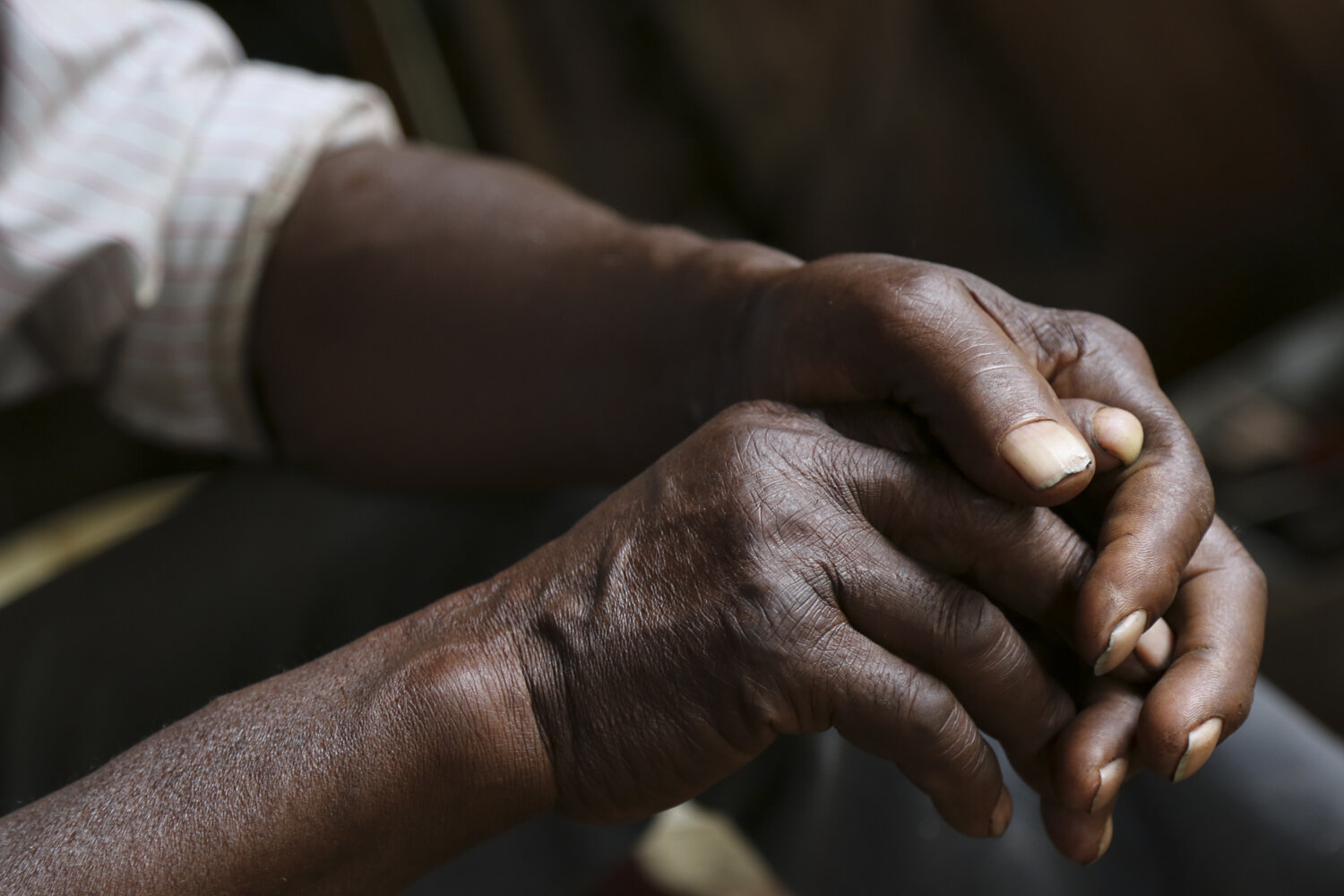Fresh Meadows Cranberry Farm © Gene Dominique
Gene Dominique’s Still Here - African American Farmers in the 21st Century shows Black farmers of all ages and experience levels contributing to a backbone of American industry, despite numerous hurdles.
In March 2021, it was announced that roughly half of the $10.4 billion dollar portion of the American Rescue Plan earmarked for agriculture relief will go to Black farmers. Aid in the form of debt relief, grants, training, education and other assistance will help historically disadvantaged farmers acquire land and build or supplement existing farms. The news is welcome, and tainted by a lawsuit filed by disgruntled white farmers who insist that the Biden administration’s strides toward equity are biased.
While the case winds its way through this country’s labyrinthine legal system, the farmers portrayed in Gene Dominique’s long form documentary project Still Here - African American Farmers in the 21st Century will continue working. Inspired by his family’s south Louisiana agricultural legacy, Dominique captures the love and labor of working the land in images that easily rival the storied work of Farm Security Administration photographers.
I’ve known and admired Gene’s work for a few years now. It was a pleasure to learn about the series’ origin, how it started and who participates, and how he plans to pursue it as Covid-related restrictions are slowly lifted.
Roula Seikaly in conversation with Gene Dominique
Charles Guidry Sugarcane Farms © Gene Dominique
Roula Seikaly: When and why did you start photographing Black farmers?
Gene Dominique: I visited my first farm in May 2018, but the inception of the project began months earlier, in 2017. It was inspired by two things: My grandfather, William "Boone" Dominique and a Reveal podcast I heard during the summer of 2017 called Losing Ground.
My grandfather and his five brothers were sugarcane farmers in South Louisiana. Whenever I visited my grandparents, I'd always ask my grandfather about his health and his work, "how is everything Pop, how are you doing?" "I'm still here" he'd always say. That refrain "still here" was on my mind when I heard the podcast about Eddie Wise, the North Carolina pig farmer whose land was confiscated by the United States Department of Agriculture after Wise fell behind on his farm loan payments.
The story about Eddie Wise and how his pig farm failed made me think about my grandfather and his successful sugarcane operation. I kept thinking about the importance of stories about Black farmers and how they are still here in spite of all of the obstacles against them. And so my photo-doc project Still Here - African American Farmers in the 21st Century was born.
Charles Guidry Sugarcane Farms © Gene Dominique
Seikaly: Are the six farms you've photographed so far located in the same geographic region, or more spread out? Is geographic diversity important to you?
Dominique: So far I've visited farmers in California, Louisiana, North Carolina, Virginia, Massachusetts and New York. Geographic diversity is but one important feature of my project. I am illustrating how Black farmers are working land in a variety of places around the country, and how those farmers are old, young, female and male, and their crops and business operations are unique and diverse. I mean, a cranberry farmer in Cape Cod, Massachusetts?
Seikaly: How do you approach the people who manage or own the farms? Is it by word of mouth, or do you use social media or other means to spread the word about this project?
Fresh Meadows Cranberry Farm © Gene Dominique
Dominique: I'll tell you how I met my first farmers and how I'm meeting them now. After puzzling over how to meet Black farmers and doing some Google research back in 2017 I happened upon the website for the National Black Farmers Association. I reached out to John Boyd and his wife Kara and learned that the association's annual convention was coming up in October of 2017. I signed up to attend the 27th annual convention; designed some leave-behind promotional collateral and bought a plane ticket to Hattiesburg, MS. I attended workshops and talks during the three-day convention, meeting farmers, making acquaintances and pitching my project.
I made it a point to attend the conference without a camera. My sole goal was to meet farmers and to introduce the idea of Still Here so that it would be on people's minds when they went home. I followed up with some snail-mail letters (many older farmers don't use email), some phone calls and emails and arranged my first farm visits. That's how I was introduced to the Reverend Lovely Moore, a Virginia cattleman who may be the oldest Black farmer around. Reverend Moore was 86 when I met him at the NBFA convention.
Now I continue to use a variety of methods to meet new farmers and I have a list of people I want to include in the project. One thing I do each time I finish photographing on a farm is that I ask the farmer I'm visiting if they know one or two other farmers I should meet, preferably in a state other than where we are at the time. That's how I learned about Will Scott in Fresno. I learned about Mr. Scott from Ron Kelley, a row crop farmer in the Sacramento Delta area. On my last day with Mr. Kelley, I asked if there were other Black farmers in California I should know about. He mentioned Will Scott, a third generation farmer doing organic produce in the Central Valley. After I learned about him, I researched his background, then I called him and gave him my elevator pitch about the project. He's interested in participating, so I'm going to Fresno.
My project is not done. I hope to finish it by fall of 2022. Obviously, the pandemic forced me to suspend travel for over a year. But as things open up, I am getting back out there.
Rev Lovely Moore Cattle Farm © Gene Dominique
Seikaly: How much time do you spend on site?
Dominique: The amount of time I spend with each farmer depends upon the size of the farm. My typical practice is to arrive on Sunday for introductions and maybe a tour around the farm, then on Monday I shadow the farmer. I do photography from Tuesday through Friday, and make interview notes at the same time. On Friday, I'll do a comprehensive interview, tie up any loose ends and fly home on Saturday. I'll spend fewer days on a small farm, but the routine is the same. I am self-financing my project so I try to book airline tickets as inexpensively as possible and I stay in modest motels at my destination. I try to stay close to each farm so it's easy to get there in the morning. Farmers start work early and it's important for me to be there when things are getting started.
Soul Fire Farm © Gene Dominique
Seikaly: You've captured an age and experiential range among farmers. Can you comment on generational attitudes toward / ideas of / hopes for small farming and Black entrepreneurship as you've experienced them?
Dominique: Each of the farmers I've spent time with is acutely aware of the challenges they face, whether the head winds from climate change, foreign and domestic competition, or from governmental antagonism or inaction. Farmers tend to be both optimistic and realistic. Their optimism is based on reliance on their own skills and expertise to get crops into the ground, to harvest them and to get a fair price in the marketplace. Yet they are realistic and see that going-forward success for small farmers will look different than it did a generation ago. Going forward some small farmers pin success on alternative crops including organic and specialty crops rather than commodity production. Others see the way forward as being able to train new farmers and teach them how to acquire and steward the land. For example, Leah Penniman, her partner Jonah Vitale-Wolff and the farm team at Soul Fire Farm believe that activism, education and protection of the land is the way forward for Black farmers.
One recurring issue I have seen as an outsider is the dilemma of the generational legacy where after years of farming to support and to create family prosperity, older farmers find it difficult to pass the farm to a new generation. Herb Brown, Sr., of Browntown Farms is proud that he will be able to rely on Herb Brown, Jr., to take over their operation and steer it in a profitable direction when the time comes. Herb Brown, Jr., trained and educated in modern farming strategies, uses his degree in agriculture from Virginia State University as one of a variety of tools to sustain a successful farm operation with his father. Herb Jr., noted during my time at Browntown Farms that "you have to be skilled at marketing, business, accounting, growing, science and be your own mechanic” in a farming operation. But the ability to keep the land in the family may be the exception rather than the rule for Black farmers. Some of those I've met do not have heirs ready, willing and able to take over the farm operation from their elders.
Rev Lovely Moore Cattle Farm © Gene Donomique
Seikaly: The subject of this project and your approach to it remind me of FSA photographers and the push to document rural American life. Is that accurate?
Dominique: The work of the Farm Security Administration photographers, and mine, are both grounded in the documentary photography genre. But my project is different. My project is not government funded, nor is it propagandist with political motives. My intent and goals are to shine a light on Black farmers around the country, and with their permission and cooperation, illustrate what their work life looks like right now. My vision is grounded in respect and reverence. I have read that Floyd and Allie Mae Burroughs felt like they were taken advantage of when the FSA photographers embedded with them and revealed parts of their intimate private lives.
Mr. Burroughs lamented that he and his family never even received a copy of Let Us Now Praise Famous Men, the book wherein their images were made famous and became iconic references of the Great Depression. I am telling stories of success or at least survival in the face of discrimination and mistreatment. If there are to be iconic images from my project I hope they are Charles Guidry with his Rolls Royce, purchased after a successful harvest, or Rev. Lovely Moore's hands, where a lifetime of farming is etched. Plus, I've guaranteed each farmer I've visited a signed copy of my book when it's published!
Ron Kelley Farms © Gene Dominique
Seikaly: What do you want audiences to take away from looking at this project?
Dominique: Since I don't think people generally consider farmers at all, let alone Black farmers, I want to, as I've said, shine a light on the work lives of Black farmers so that people know about them, know about their successes and their struggles, and their hard work. At Thanksgiving time I'm certain no one stops to consider that the cranberry dressing on their tables comes from the bogs of Fresh Meadows Farm, a Black owned and operated farm operation on Cape Cod, Massachusetts.
I want audiences to know that in spite of everything, Black farmers are still here.








